How often have you thought about what or who is behind this or that image? Where did it come from, who was the progenitor of the style, or what did the artist put into his work? The hero of our today's interview is just one of those few tattoo artists who not only independently conduct whole research in search of origins and meanings in the visual arts, but also popularize the history of painting and tattooing.
Mikhail Kozlov is a tattoo artist from St. Petersburg who came up with and implemented a truly unique educational and entertainment project on Instagram. In the format of short cards in the Instagram Stories, Misha talks about the history of Japanese and Central Asian painting and tattooing. Importantly, the stories he shares with subscribers are not only insanely informative, but sometimes funny and amazing.
These stories draw the reader in, make him even more interested in the history of the emergence of secret meanings, and in general, the culture of Central Asia, and most beautifully, they form the reader, who later becomes an owner of tattoos with Japanese roots.
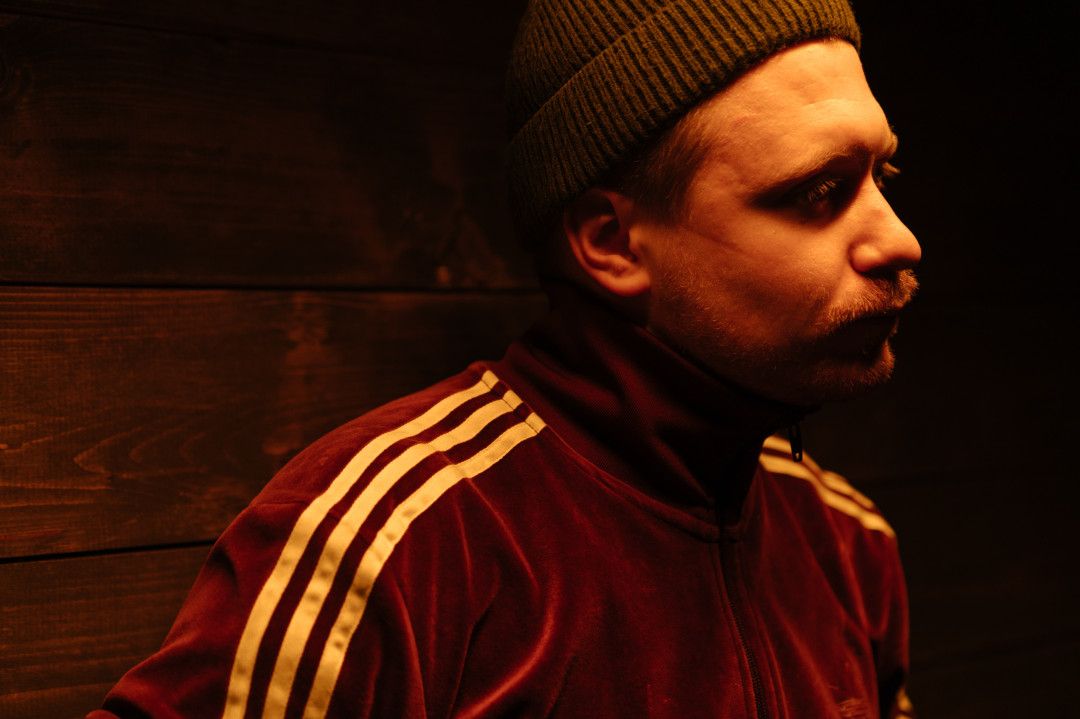
- Hi, Misha! Let's get acquainted, tell us about yourself and your project. What is it for and for whom?
- My name is Misha Kozlov, I am a tattoo artist from St. Petersburg, Russia. I am engaged in Japanese tattooing, rethinking traditional techniques and subjects. I work with compositional solutions and stylistic techniques of the Japanese cultural tradition, but it seems to me interesting not to reproduce them exactly, but to interpret what I saw from the position of Western mentality and with the help of a modern visual language. The modern Western approach to tattooing is no less interesting than the medieval Eastern one - and I try to find a golden mean.
In the format of card lectures on Instagram, I try to introduce my audience to the context that gives depth to all this visual exoticism. It's cool and interesting work, and what is important, it resonates.
The main source of inspiration for my tattoos is Japanese Ukiyo engraving. I'm interested in converting the visual language of engraving into a tattoo - and I'm using the techniques I like to work with the most - dotwork - more dots, fewer lines.
It is important for me not only to work with visuals, but also to tell the story behind a particular engraving, some stylistic or technical solution characteristic of the genre. In addition, Ukiyo is almost always an illustration: usually there is some kind of plot from mythology, literature or real history that stands behind the image. There are a lot of nuances that affect the perception of the image - and it becomes more interesting to watch when you know more.
So once a week I dilute publications with new works with short card lectures on the culture and mythology of Japan in the context of tattooing.I try to interest people on the topic and raise the curtain. Japanese engraving, Japanese tattooing is much more than a few images that have become entrenched in pop culture.
- Tell us about how you got interested in Japanese culture? Why did it hook you so?
- It all started with one picture - I caught my eye working with a tiger, which sits in a bamboo grove, looks at the viewer and smiles. It was obvious that the artist had never seen tigers. The proportions of the body looked very unusual, the muzzle was like a dragon, with a heavy jaw and bulging eyes. With all this, the tiger in this picture was very lively, I directly felt that he would now get up and leave the frame about his business.
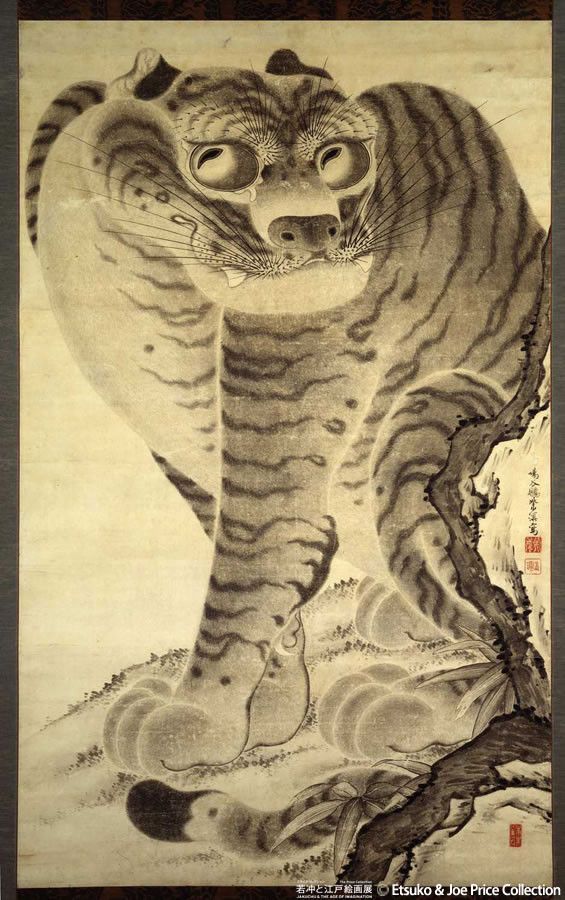
And I started looking for other tigers similar to the first one.
I looked and understood the stylistic features of tigers from different eastern countries. At first I was hooked by the Korean ones, they caught my eye the most. In Korea, tigers have a special attitude, there are several stories that are constantly encountered: a tiger looking at a magpie, a tiger smoking a pipe surrounded by hares, a tigress with tiger cubs.
I looked not only Korean, I came across Tibetan, Japanese, Chinese. They all turned out to be very different in mood and manner of depiction: Korean ones look the most unpredictable, strength and cunning are felt in them, and Tibetan ones do not always look like tigers at all - but they always look evil and fierce. The Chinese, on the contrary, are very plush and peaceful - and in the Japanese there is much more from mythical dragons than from a real animal.
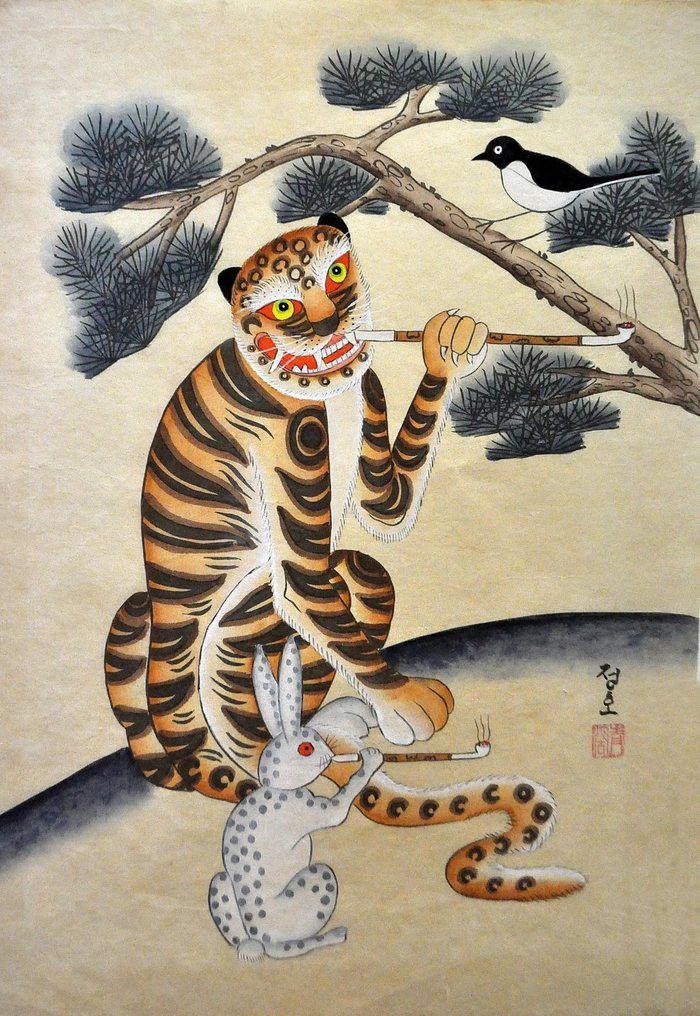
I became interested in these differences and tried to capture the different characters. I mixed them in different proportions - and at some point I discovered that Japanese tigers are closest to me.
Interest gradually spread from tigers to Japanese prints and painting in general.
I like the Japanese logic of the construction of the image: the way the brush moves, interacting with the texture of the paper, the story behind the image - why the Buddha always has three stripes on his neck in iconography, why the eyes of some samurai are twisted, why does the fox hold the barn key in his teeth etc.
It is very interesting to talk about this through a tattoo. The deeper I dig into this, the more interesting it becomes.
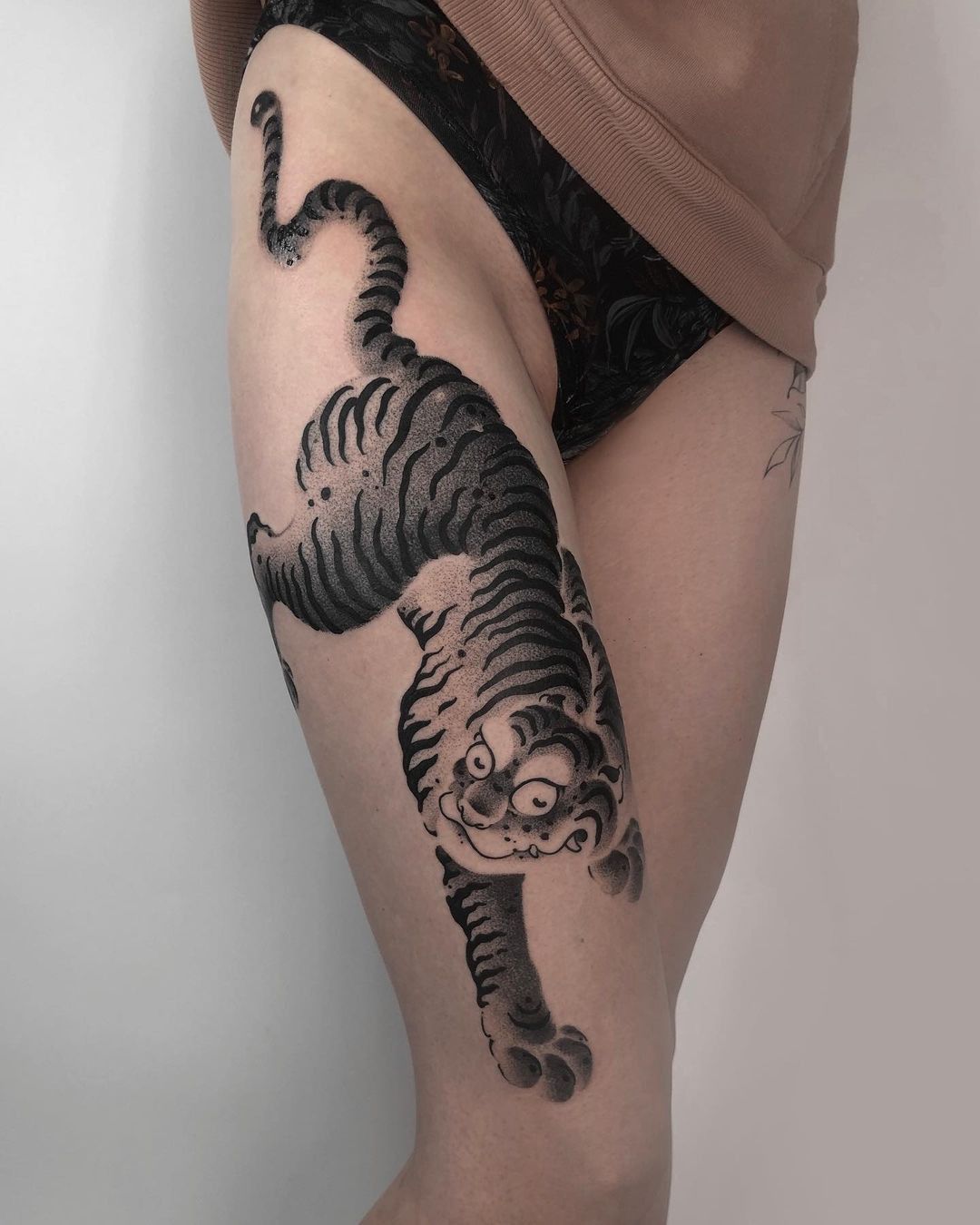
- Tell us about how you decided to make the format of training cards in Instagram Stories?
- It was not planned. I just wanted to share the material at some point - I am constantly looking for some cool pictures, legends, taking notes, this is part of my job. I sat in quarantine and thought that if my audience is interested in my tattoos, then it may be interested in the material on which my work is based.
I published one article about Hannya - and there was some crazy feedback. This inspired me, I decided to repeat it. I was just telling interesting legends, stories about iconic characters, my thoughts on this occasion from time to time - and I myself did not notice how this became an important part of my work.
This turned out to be a damn useful and interesting thing: when I prepare some material, I willy-nilly structure all the information on the topic in my head, I stumble upon some details that I have not seen before, I get additional information from the audience - this is everything helps to continue this search.
- How do you choose topics for the next lectures?
- I choose the topic randomly, usually it is something that is interesting to me - and which can be told in the format of Instagram so that it would be interesting to an unprepared viewer. It can be the plot of a legend, a description of some phenomenon of Japanese culture, a brief overview of the works of one of the artists who inspire me.
Sometimes I associate the topic of the material with a new tattoo to immerse the viewer in context.
I just try to write so that they like the topic - because it can provoke a person to further immerse themselves in the material.
- Do you know Japanese? Where do you find all this information that you share with your subscribers?
- I don't know Japanese. There is very little information in Russian, as if in English is also not enough to grasp all the nuances - so sooner or later you will have to learn Japanese.
I find something in books - I buy it, the guys bring it to me to the sessions. But most of the information I get from the Internet. More often than not, these are just some scraps that I myself tie together.
I usually just look for engravings which catch my eye. Considering, trying to figure it out. Then I do a search by the picture - and I try to find all the information that is.
- Have you traveled to Japan? If not, are you planning? What would you like to see there?
- In 2020 I was going to, but failed. The desire to go was preserved, but in the near future I have completely different travels, so for now I am getting to know the culture remotely.
I would like to see everything there, hah.
It seems to me that it is important not even to look at something specific, but to feel the atmosphere. I doubt that it can be understood if you were not born and raised there, but I hope to catch something that will allow you to dig even deeper into the topic.
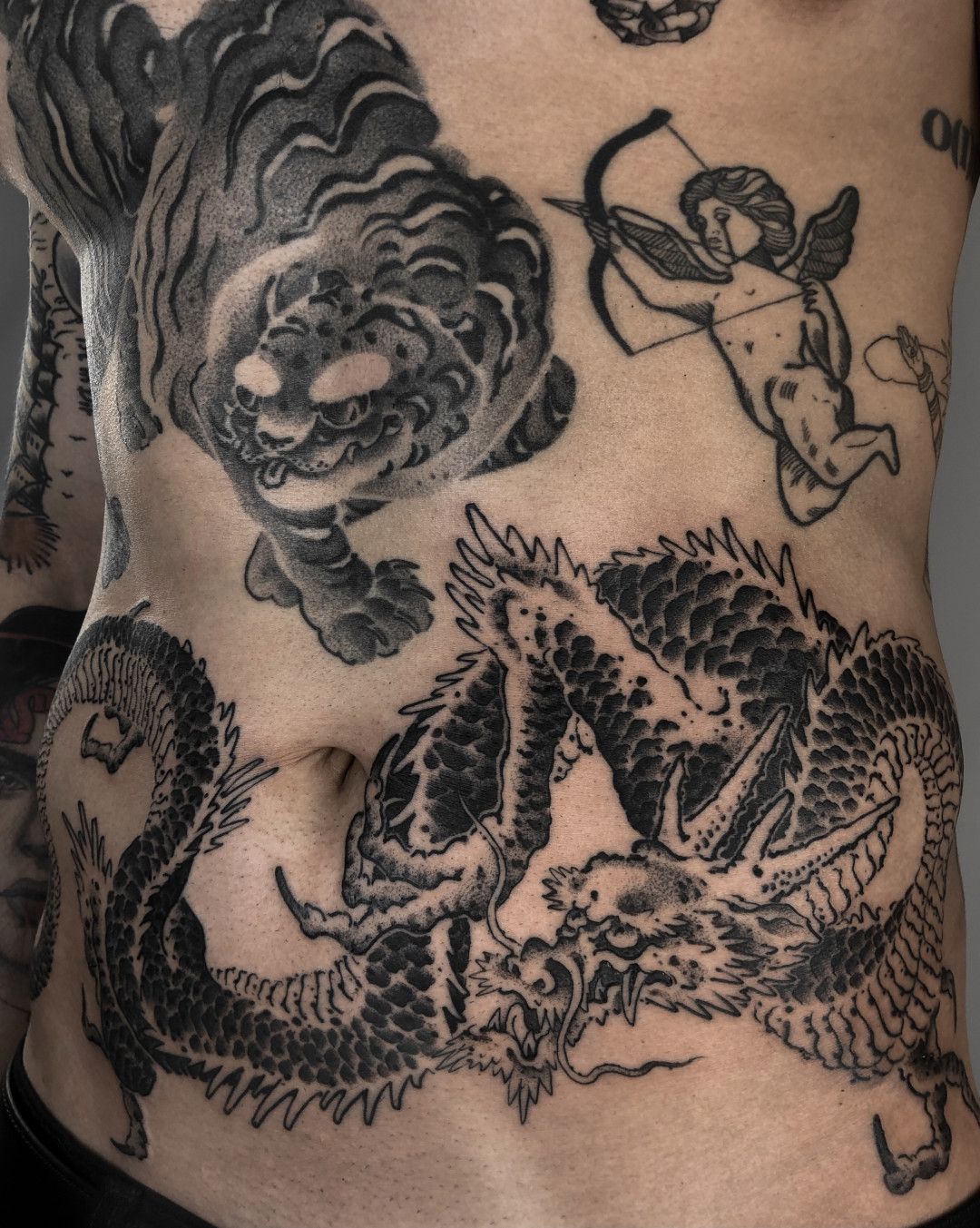
- Do you already feel changes in the "awareness" of people coming to you or is it too early to draw any conclusions?
- I feel it. Firstly, there are guys who, after another immersion in the material, became interested in a specific topic and came to get a tattoo on it. For example, I told a story about okuri-okami, a wolf that chases a person at night on a deserted road. This wolf protects the traveler, a person can be sure that his path will pass without incident, and he will definitely reach the goal. One caveat - if a person stumbles and falls, then the wolf will kill him. To many, this seemed like a cool metaphor, and I received several requests for okuri-okami tattoos right after the post was published.
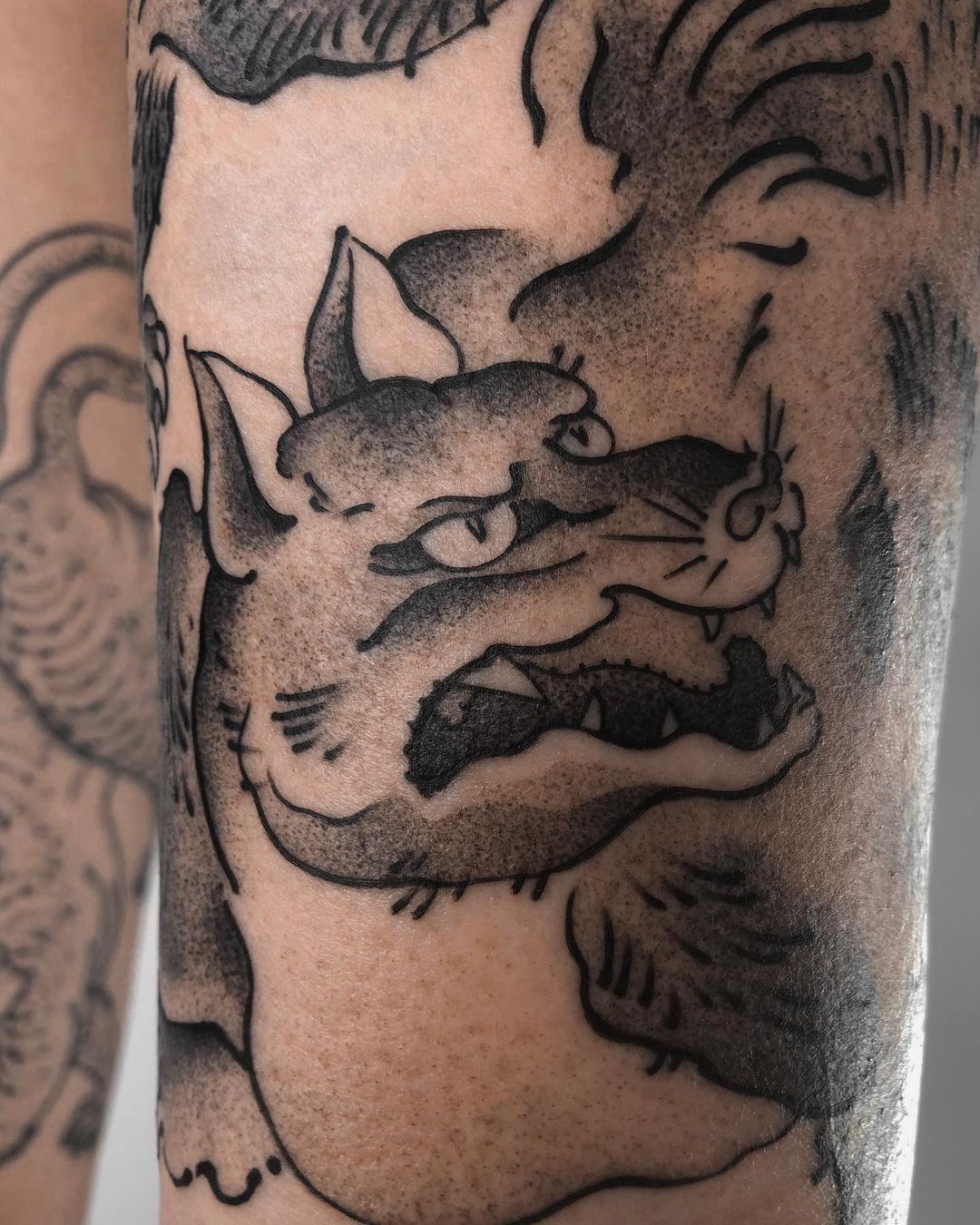
Most of the guys who come to me for the sessions say that they were either interested in Japanese mythology before getting to know my account, or that my diving helped to discover this topic.
Once they wrote to me that they were reading my cards to children - it was very unexpected.
It's great to see this feedback, it helps in the work.
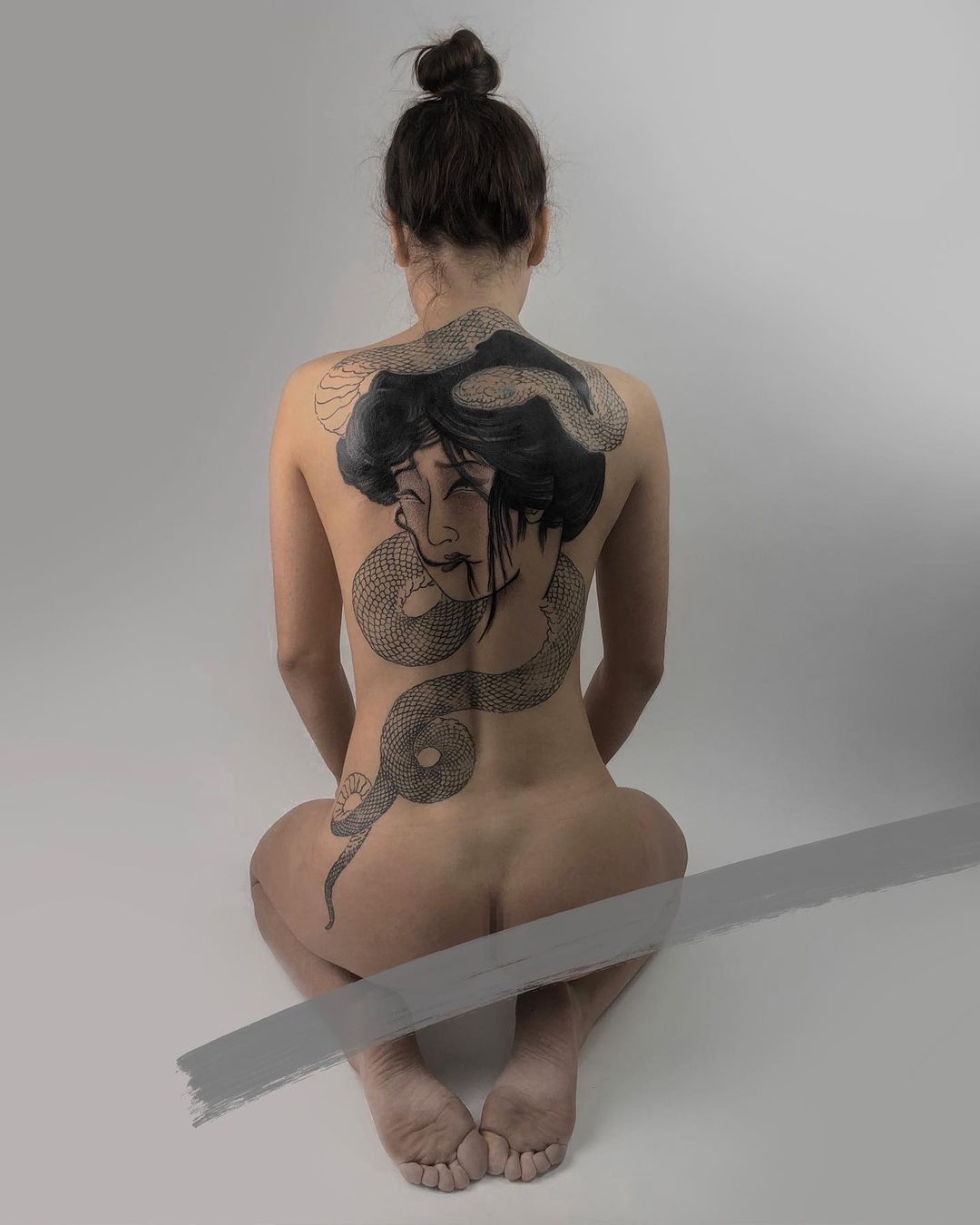
- Do you choose youself images for specific personalities? For example, as do the same tattooists from Thailand who work with Sak Yant. Tell us a little about your workflow.
- It seems to me wrong to play a psychologist shaman and try to guess what a person should wear. Usually people come to me with a relatively formed concept, or with the wish “let's do something cool”.
In the first case, we discuss the details - finalizing the main idea, discussing how to put it on the body, what elements we need, which ones will be superfluous, in what sequence we will perform the work, how long it will take, etc.
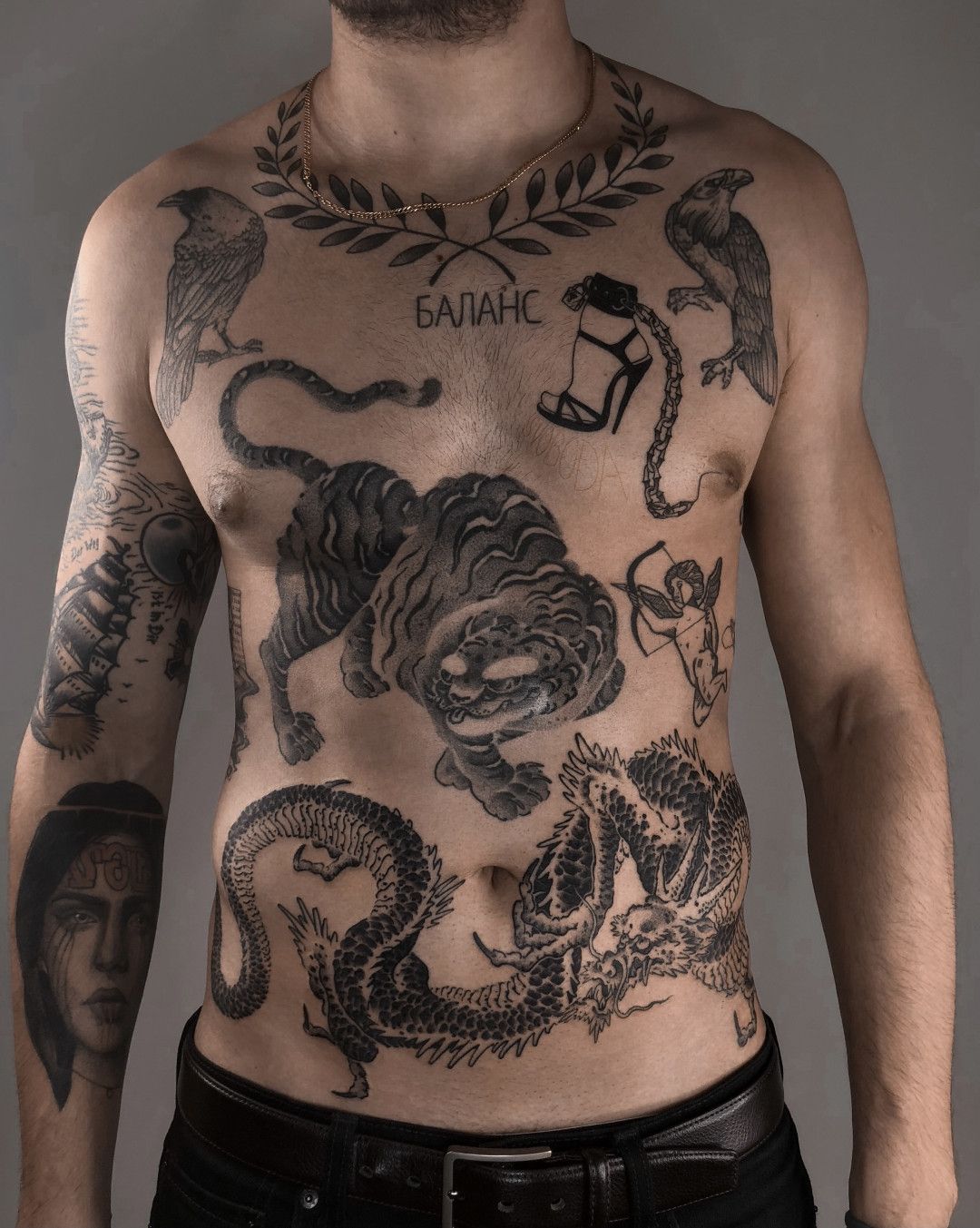
In the second case, we usually first narrow the topic to the limit: we discuss a possible range of subjects, location, size - before I start working on a tattoo, it’s still a good idea to figure out what the person really wants. The phrase "let's do something cool" can mean both "I completely trust you, do what you think is necessary" and "I really don't know what I want." If a person does not know what he wants, I prefer to assume that he does not need a tattoo now.

In all other cases, we discuss the details, sometimes I make some kind of sketch on the body, I get an idea of what and how I will do.
I prepare the sketch for the session and show it there, there is no big point in discussing and making any edits in advance, because a sketch is in any case only a concept on a white flat sheet, all the work is on the body.
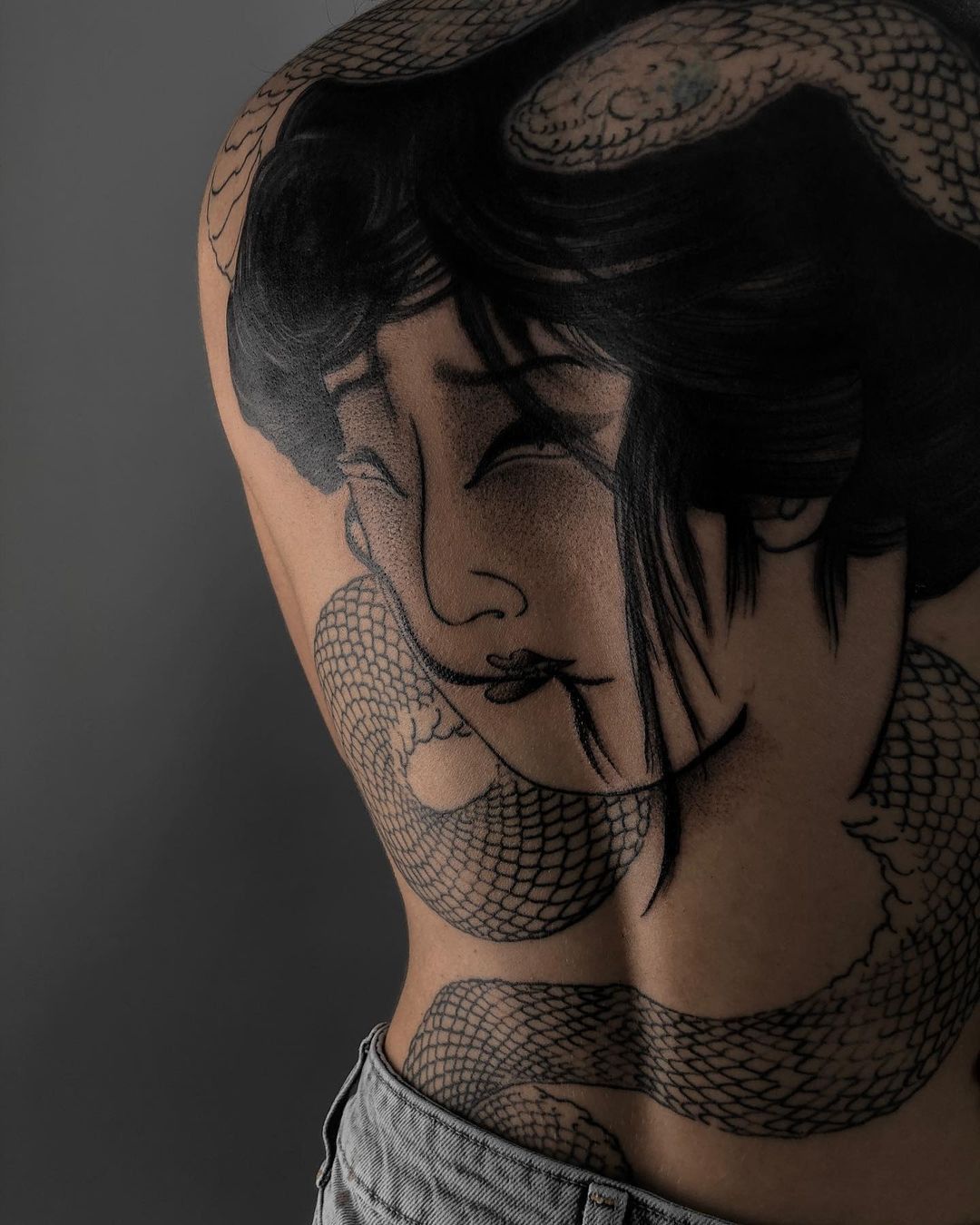
- And how often clients come to you with images that have a radically different meaning than with which the person associates it? Are you making them change their mind?
- This usually doesn't happen. It so happened that my clients, as a rule, are on the same wavelength with me, very responsibly approach the choice of the plot, study the topic in advance - and in general they understand well what and why they want to wear.
You don't need to persuade anyone at all, this is not a story about a confrontation of opinions, but joint work for a result that is equally important to both.
If for some reason I do not like the idea with which a person approached me, I will tell him about it and offer alternative options. If we feel the topic differently, the person will leave. If we are on the same wavelength, we will continue to work.
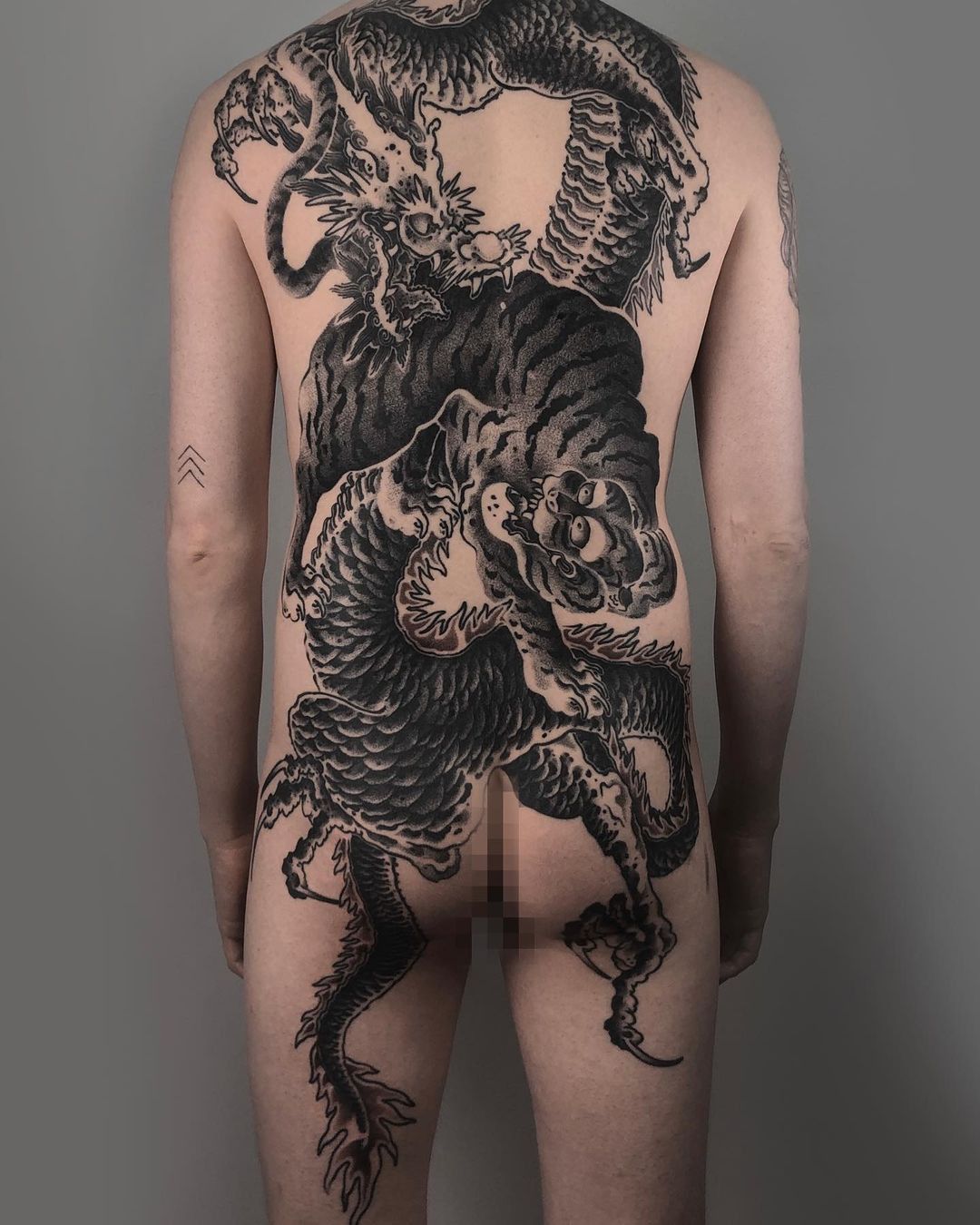
- Oriental tattoo is appreciated by completely different people around the world, but maybe you can highlight something in common among your clients?
- I Can! The people who come to me are very different, but everyone loves their life and is engaged in an interesting business.
Everyone's profession is different, but for all of them, work is not just a place from where they bring money home. This is exactly an interesting business that gives them pleasure, with which they burn - and at sessions with equally burning eyes they tell me about the nuances of front-end development and autopsy of human bodies for natural science museums.
I think the ability to value your work and turn it not into a duty, but into an important side of life is one of the conditions on which the desire to entrust your body to my work and get pleasure from it depends.
Look for even more amazing works of Mikhail on his Instagram, and do not forget to carefully look through the stories - suddenly today he will tell you about the story of the appearance of a character for your future Japanese tattoo!
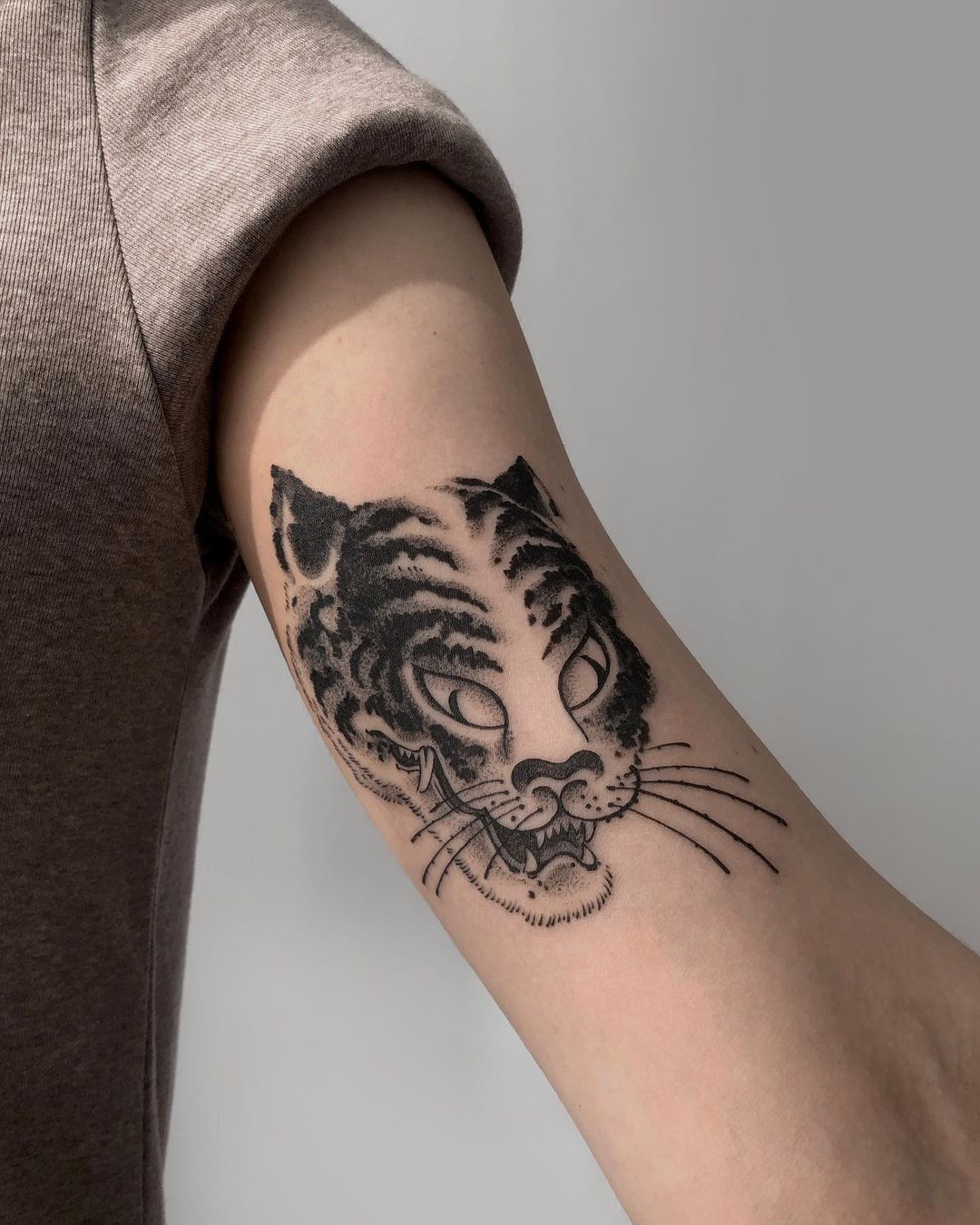
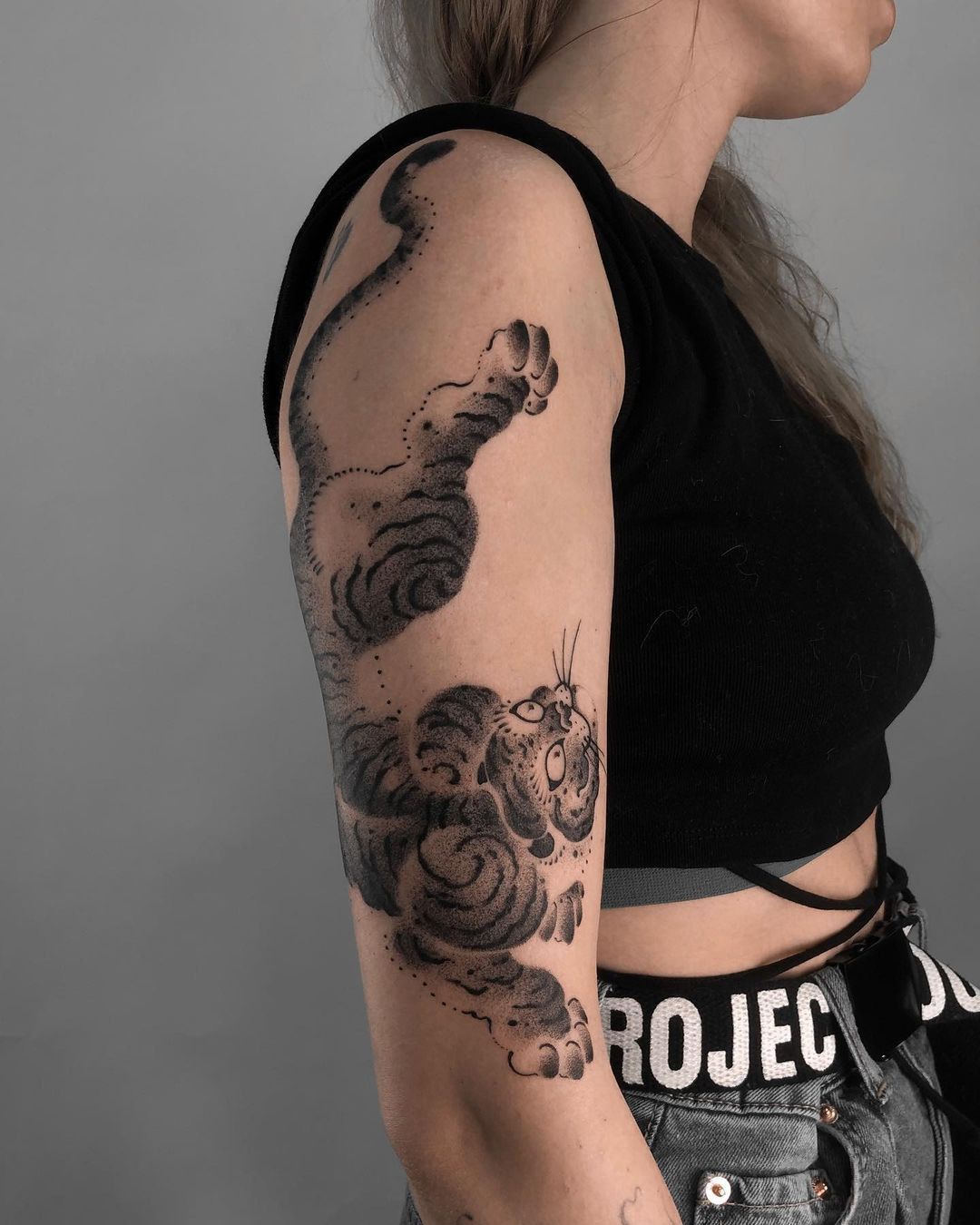

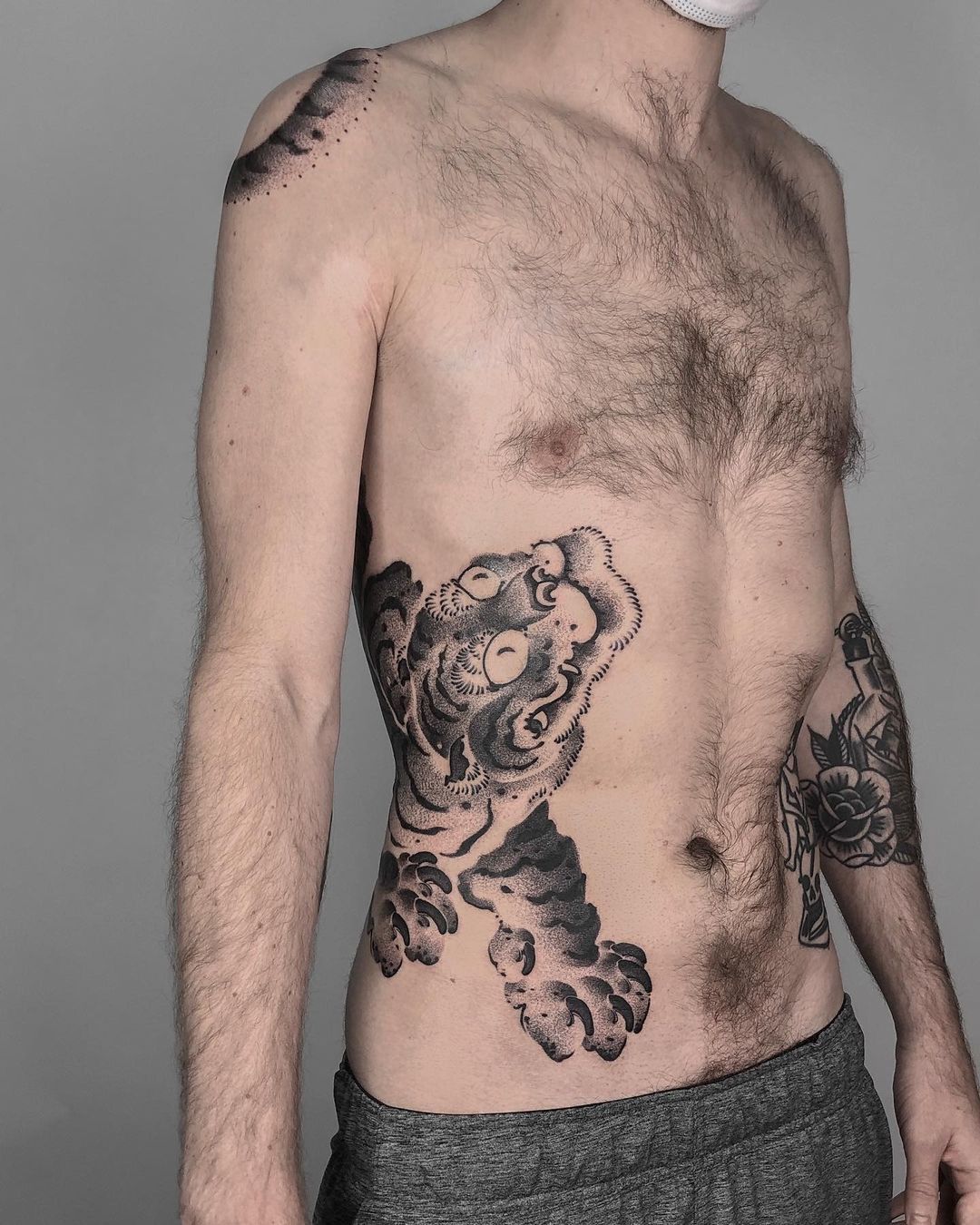
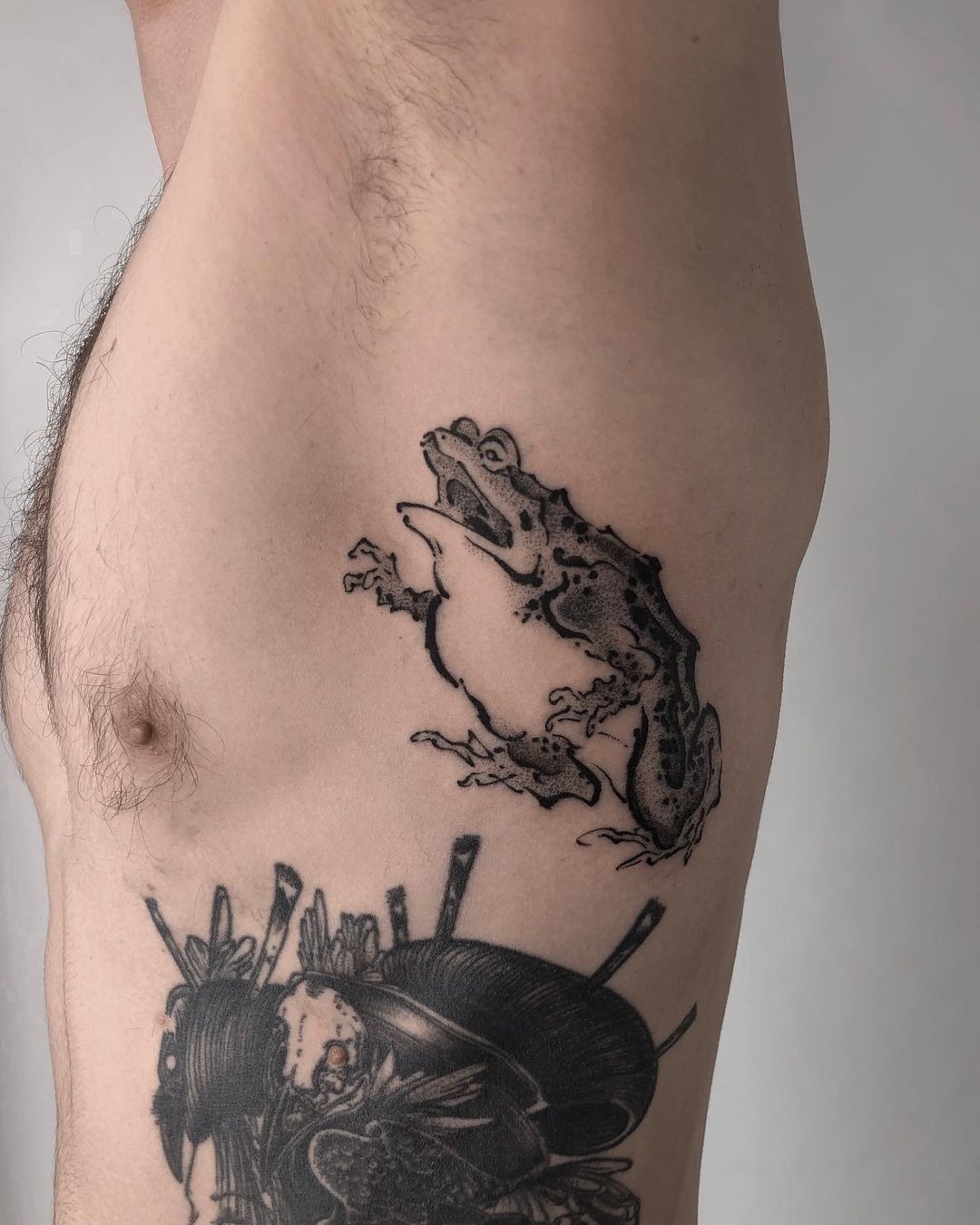
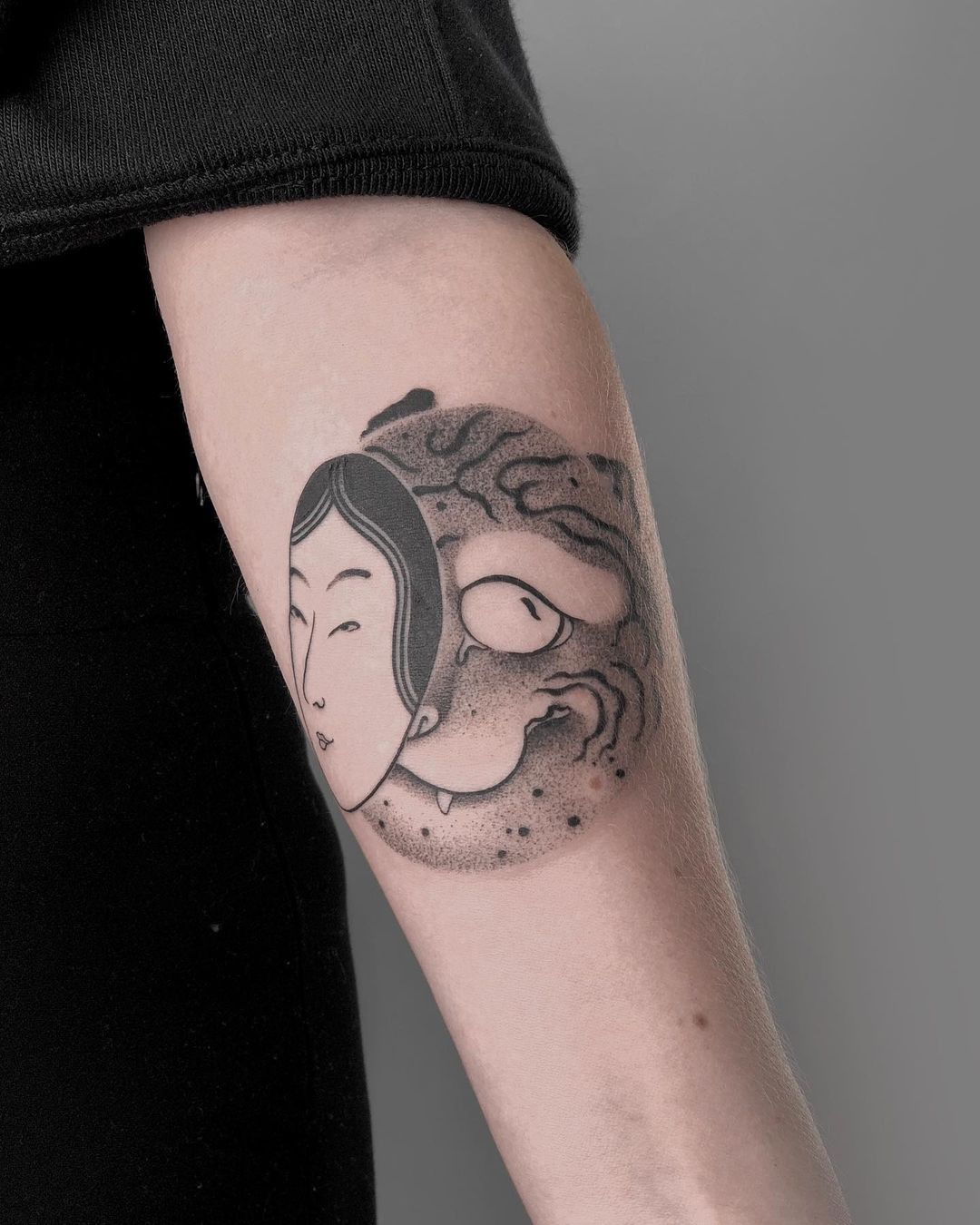
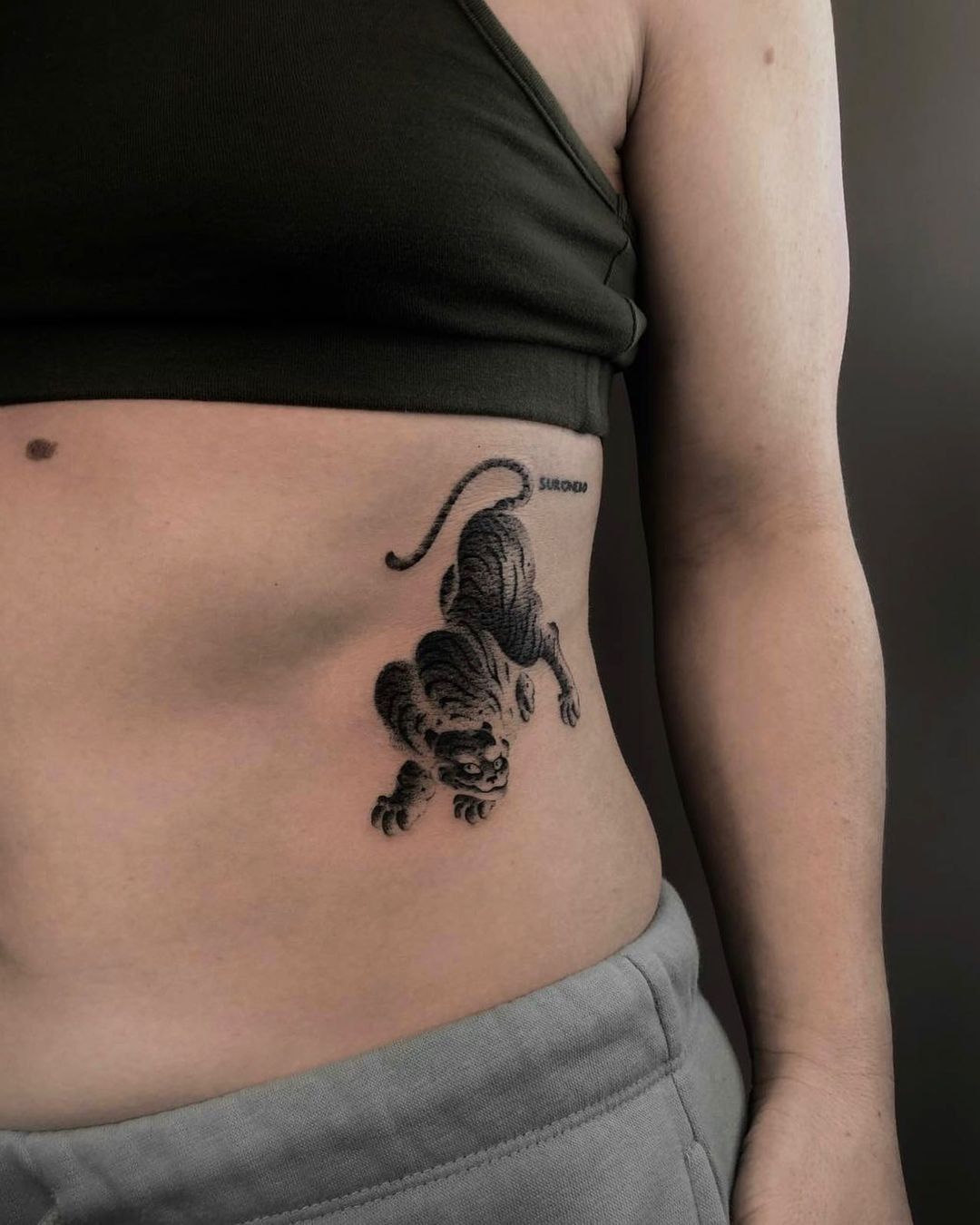
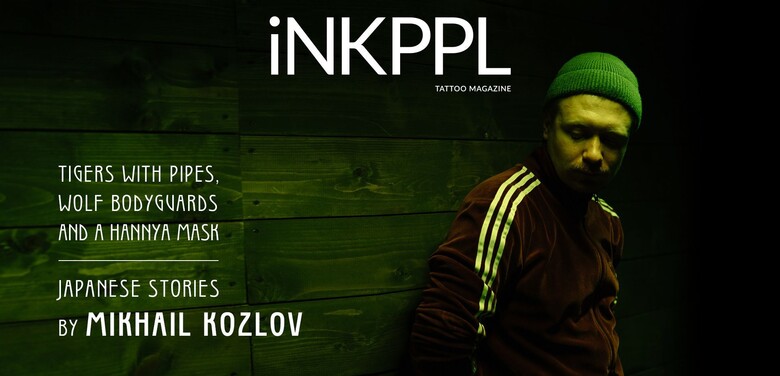





















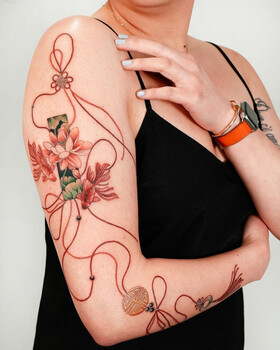
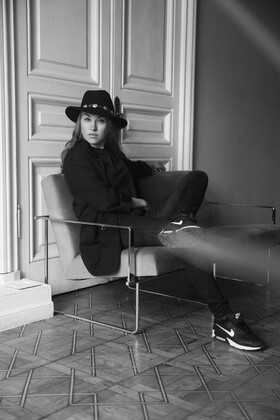

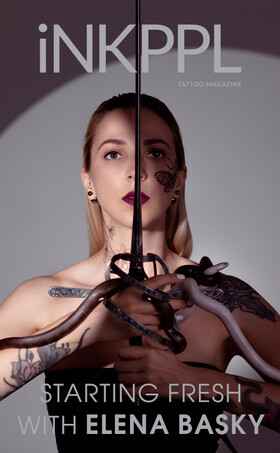

Comments (3)